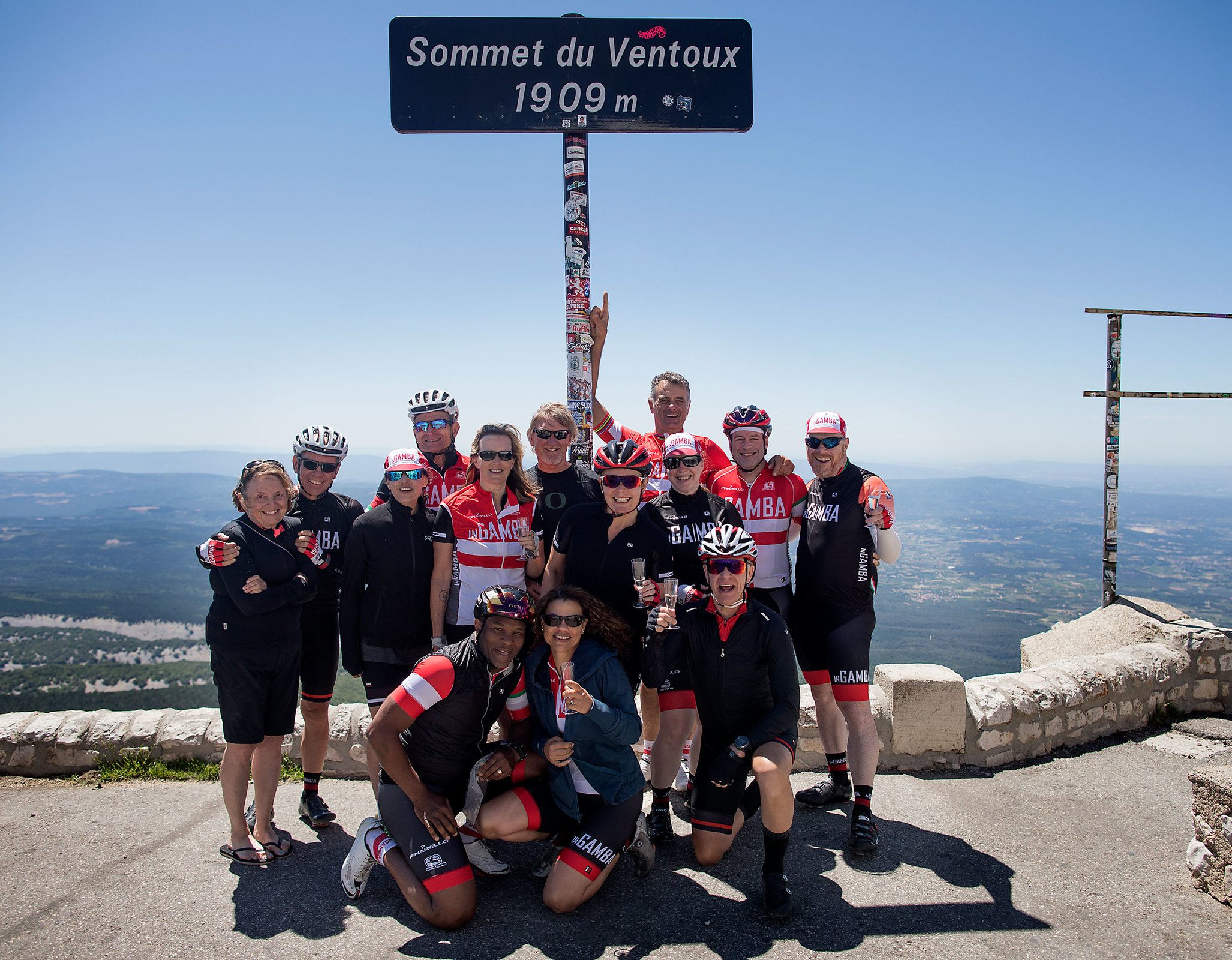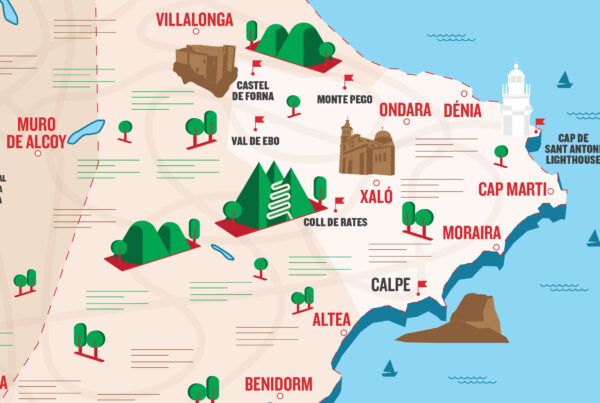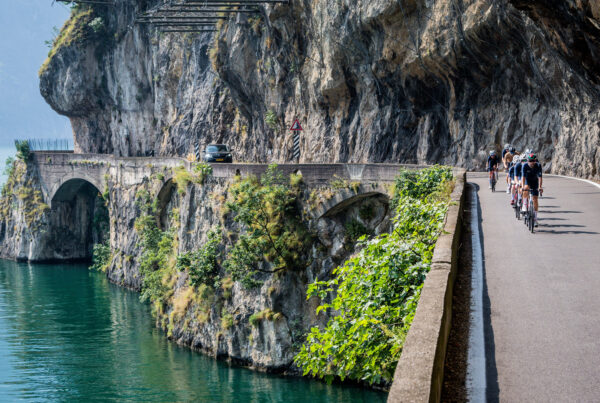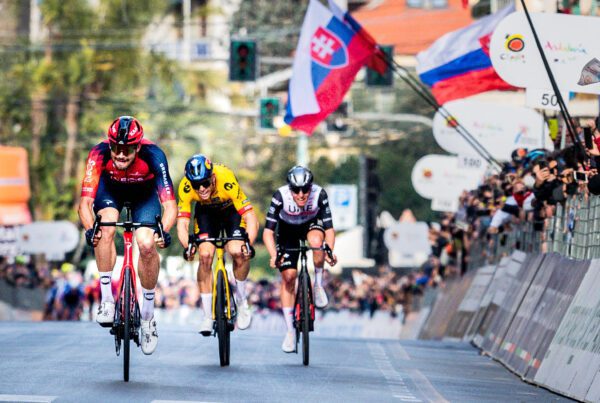“You’re right, Jim,” said Eros Poli, as we rounded another switchback into another blistering headwind. “This climb is stupido.” It was a vindication for my long-held theory that Mont Ventoux is in fact one of the stupidest climbs in all of professional cycling.
It starts with about three miles of pleasant rollers before you dive into the forest for six miles at an average gradient of 9ish percent. There is not a single switchback in sight to distract you from the grind. Then when you have just about had enough you pop out at the Chateau Reynard, where you will more than likely be greeted by an incessant head/tail/side/swirling wind for the next four miles.
Now can you just imagine arriving at the base of this ridiculous mountain as the biggest – by which I mean, the tallest and heaviest – rider in the 1994 Tour de France, having already completed the 14 previous stages. I’m wrecked just thinking about it. You look around at all the skinny climbers, amped up for their day in the spotlight, and instead of thinking about a nice quiet day in the grupetto, you attack. You attack from a long, long way out. You attack like you mean it. This is exactly what the big man, Eros Poli, did. He calculated his chances, he used his knowledge of the stage and he went for it. And he won. He won a mountain stage of the Tour de France, but not just any mountain stage, the stage to Mont Ventoux.
And yes, Ventoux might be a ridiculous, ugly and unforgiving climb, but it is a climb everyone should do at least once in their lives. And if you happen to win a stage of the Tour de France while doing so… all the better.
Jim Merithew: Can you believe it has been 25 years since you won the Mont Ventoux stage?
Eros Poli: A quarter of a century is a long time when you think about it. I no longer say it seems just like yesterday, but having the stage on YouTube and having the opportunity to see the video often, yes, it seems that time has stopped. It’s when I go out for a ride that I realize that something has profoundly changed. The funny thing is though, it’s more popular now than it was 25 years ago.
JM: You were the largest rider in the Peleton on that day 25 years ago. You seem to have figured out a way to stay fairly fit and slim. What is your secret?
EP: Yes, I was the largest. I was always the first to be dropped on the hills, but I always worked hard and struggled to survive in the mountains. When I finally stopped racing I spent three years without touching my bike. I packed on the weight, putting on 30kg. Then one day I decided to do a ride. I went out to do a ride near my house, climbing up the Cola. At one point while I was climbing a runner caught me – and then dropped me. He was going faster on foot than I was on my bicycle. I said to myself, “Eros you are better than this, get yourself in line and never struggle like this again.”
JM: You road a Pinarello to victory that day 25 years ago, does the brand still carry the same excitement for you all these years later?
EP: I was lucky enough to race with many beautiful bicycles; Grandis, Chesini, De Rosa, Battaglin, Colnago, Bianchi. But my very first Rossa (Red, this is what I called my Pinarello) I received in my first year as a professional was not only the most beautiful of all the bikes, but it was also the best bike in the peleton. I fell in love with it and it brought me luck. I do not know if today I could ride another bike. The geometries are almost exactly the same as 25 years ago. The design, the graphics and colors make my Rossa the most beautiful and desired bike in the world.
JM: Looking back would you have ever guessed you could have won a Stage of the Tour de France, let alone Mont Ventoux?
EP: In 1992, at my first Tour de France, I suffered like a cane (dog). It was very fast, crazy speeds. It like a motorcycle GP race. It was completely different from the Giro. It was another type of race, with different types of routes and much more suited to my riding style. That Tour de France I crashed, even before reaching the mountains. I had to leave and go home and watch the stages on tele. And it was while watching a stage I told Blondie, my wife Michelle, maybe one day I can win a stage of the Tour de France. The kind of race and routes can be the right ones to win for someone like me. I returned to the Tour in 1994 and after two failed attempts to escape it was the third attempt which was the good one. One thing was sure, I never imagined I could win the one I did. My alternative dream was for me to be the first one pass over the top of a big climb and experience the joy of climbing in the lead. I was almost always the last, but that day was magic. I was the first to pass over the top of a big climb and then winning the stage. Not bad for a dream becoming reality.
JM: What is the one thing most people don’t know about that day or that Tour de France?
EP: During the last kilometers of my victorious stage victory on the Italian television was Nani Pinarello (Giovanni Pinarello,founder of Pinarello). Nani asked the commentator if he knew by chance the address of my hotel because he wanted to come to compliment me. Nani wrote down the address with a ballpoint pen on the palm of his hand saying, “I always write the important things on the palm of my hand otherwise I forget them.” That evening he came to see me at my hotel and congratulated everyone. I will never forget this. That day Gino Bartali also turned 80 years old.
JM: You have been a guide with inGamba Tours for four years, do you still enjoy it?
EP: It feels like I am back in the group. I am back at the races. I have to train, to diet, but I also have to be careful. With inGamba there are two other components I am passionate about: Good food and good wine. So after every trip I have to start my training again, because after so many years of restrictions I can’t give up good cooking and good wine and I don’t seem to pedal enough to compensate and so I gain weight. But the best thing is inGamba allows me to meet many friends, new and old, and share these moments with them. I’m really happy to be a part of inGamba and I really do enjoy it.
JM: What is it like to climb Mont Ventoux all these years later?
EP: That day in 1994, I was so afraid of not making it. But now I respect the climb, am so full of emotion, and every time I’m on the most difficult stretch, in the forest, I always wonder how I made it on that day, 25 years ago.
JM: If you have one piece of advice for someone thinking about coming to ride Mont Ventoux with you in 2019, what would it be?
EP: If someone wants to come and do the Mont Ventoux with me they will need to train on the uphills, but also train at the table, eating well and drinking better. Ci divertiremo un sacco… We’ll have a very good time.
–
















